One of the many activities undertaken in architecture school is the study of Architectural Precedents. While I am may not be convinced of the outcomes, I do believe in their value. This happens at some of the earliest stages of architecture education. I personally have some struggles with precedent. I always have; even when I was a student so many years ago. I am certain that the study of existing projects has merit. I am certain that there is knowledge to be gained from their analysis. But I often struggle with the notion of “originality” within the context of precedent and student work.
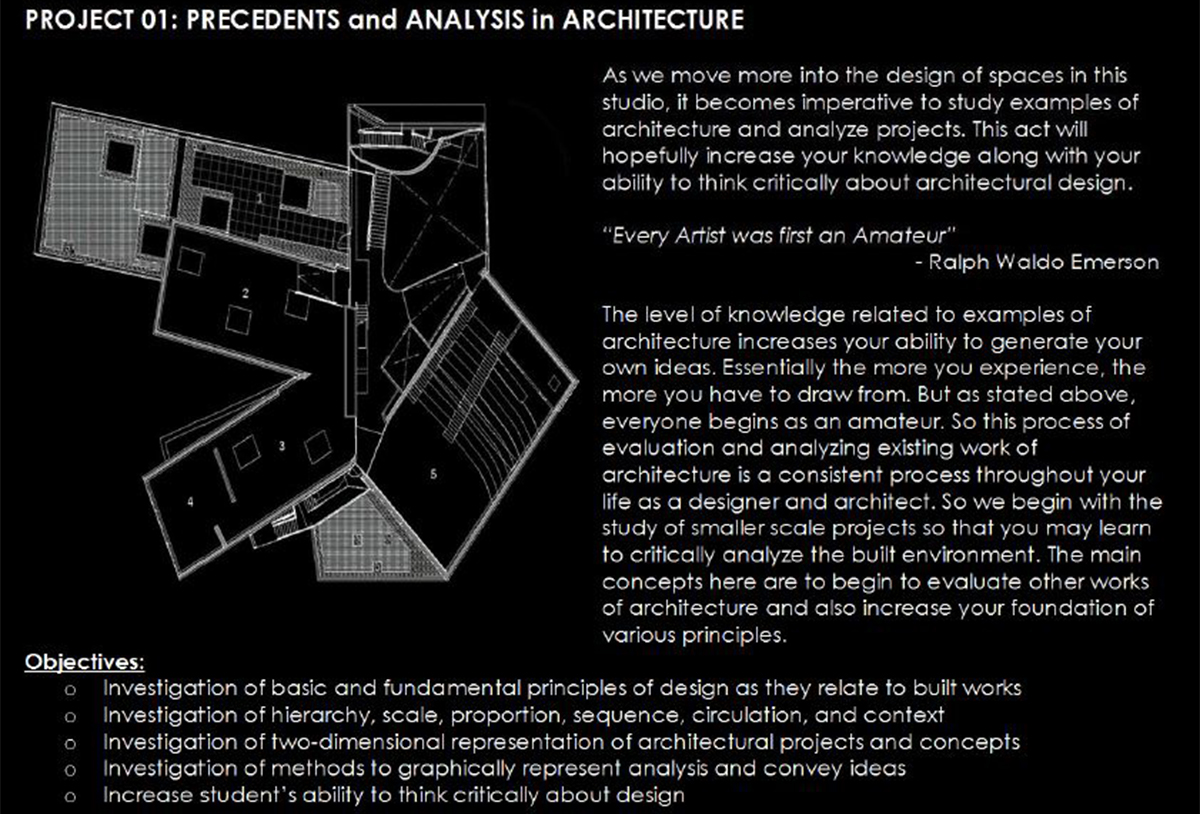
So I am about to begin the spring semester of teaching. I am once again teaching freshman design studios. During this latter half of their first year of design studio, we introduce the idea of architectural precedent analysis and evaluation. That’s right… it’s time for architectural dissection! At this stage of their education, I usually lean towards a simplified version of precedent. Not in the sense that we do not delve deeply into the analysis of projects, but that the projects tend to be smaller in scale and mostly residential in typology.
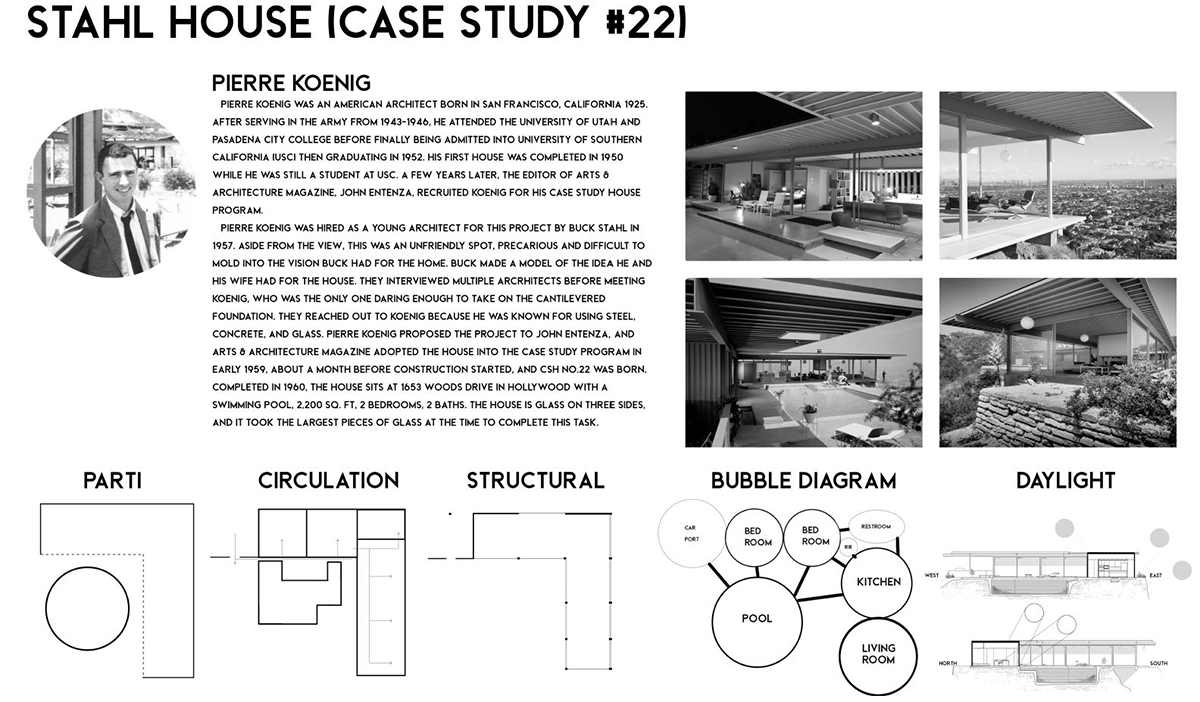
The rationale behind this is essentially two-fold. One, the students already understand the notion of “house”. They are familiar with the components of a house as they relate to what we will eventually call the “program”. But at this point, the students are not aware of project programs or the act of programming. Two, the projects are smaller in scale to allow a deeper understanding of those components they already know. And most of these houses are not projects that I would assume many of these students to be aware of. So below is the current running list of first-year precedent projects. The biggest issue is that there needs to be very adequate documentation available. Surprisingly that is more difficult than you think. Some projects I really wanted on the list, but there are only photos available. (*Note: If you have any to add, please post a comment).
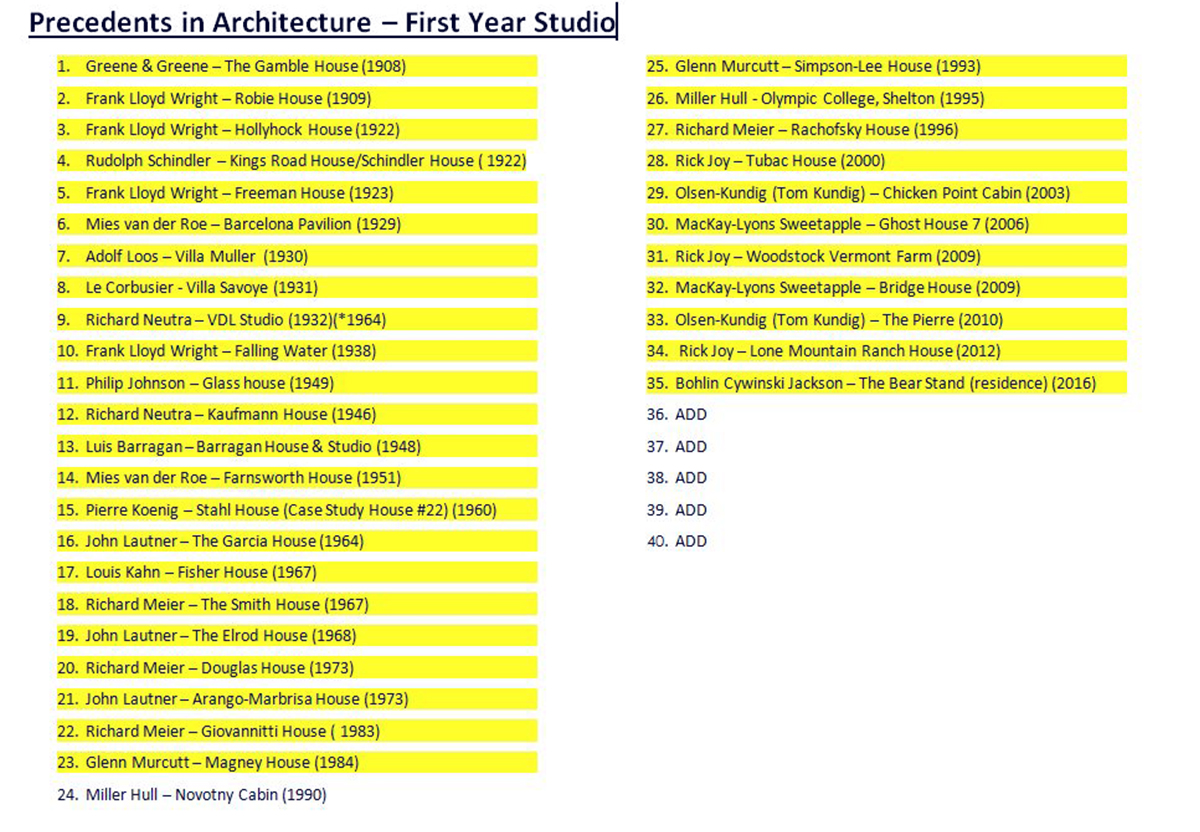
The students are tasked with finding all the relevant information they can about these projects. I only supply the information on the list above. Now the next steps of evaluation and analysis are in evolution at this point. Of course, they find a plan, section, elevation, site, etc., etc. The basics. In the past, students have created drawings and diagrams related to the projects. This semester, I may be pushing to more digital modeling and analysis than in previous years. I am not quite decided just yet. We address issues of circulation, public/private, structural systems, materials, space hierarchies, proportions, datum, axis, sun path, orientation, passive systems, and so forth. There is also some discussion about theoretical applications and understandings and historical context. I am considering evaluating the projects under the lens of the recent AIA Design for Excellence framework as a new twist. Yet another option would be to run some energy simulations on each and see how they might perform under some basic assumptions. I think for some of the pre-air conditioned projects that would be VERY interesting. Even to then compare to those after.
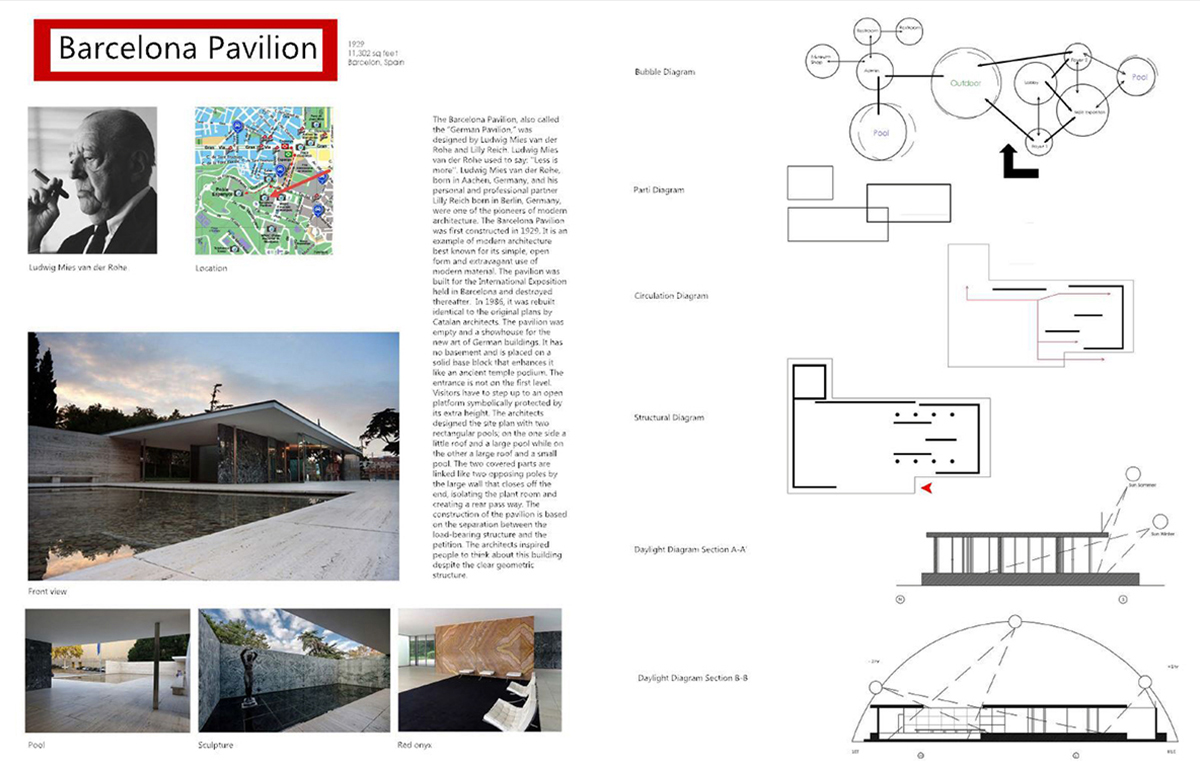
But as we move beyond the understanding of analysis, I often shun precedent as it can lead to duplication. I think that is a difficult issue for design students, but maybe especially for the younger students. I do see this happen across all year levels of students when precedents are directly duplicated in the projects they are supposedly designing. While I can understand the less destructive reasons for this to happen and even be acceptable, I think it creates shaky ground. I am not certain that allowing (or even encouraging) this replication is a benefit to the student. I understand they are young and it can seem like a harmless happenstance, it does warrant some pause as to the possible repercussions. I know of a few examples of newly graduated students who have been tasked with designing some small, one-off, or even dog house project that turned out to be a complete copy of previous work. There is some portion of my brain that says the improper study – no make that – the reliance on precedent is what leads to those situations and occurrences. I find that sometimes many design students get hung up on a “really cool” aspect of a precedent and they simply plug it into their own project design. This misses the goal completely but is also a fairly predictable outcome. And it can become a difficult habit to break as they progress through school. And sometimes even into their career. Yikes!
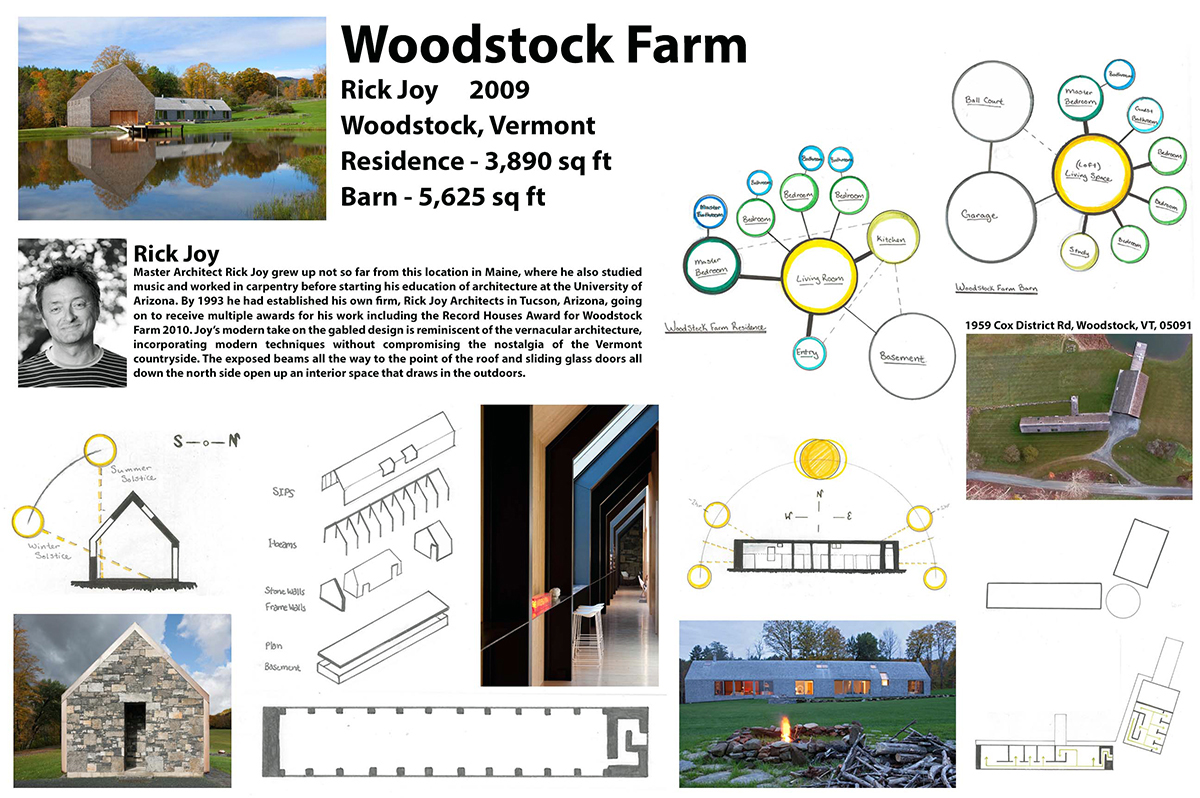
The other issue that I seem to apply to precedent (and this one is 100% personal) is that it actually subtracts from creativity. When I was in school, for better or worse, I always steered away from precedent. I wanted to create something new and fresh. It may have not been feasible, but it was certainly original. So my personal stance is that it keeps a designer from pushing into the unimaginable to some extent. If I spend too much time on what has come before, I may not be able to imagine what comes next. While one of my most favorite colloquialisms is “You have to know and understand the rules in order to properly break them”, I am not certain this applies to architectural precedent. It takes some delicate navigation of this practice of architectural precedent by both the student and as a professor. I am certain that I will continue to evolve this concept with each iteration of the freshman year. Wish me luck as it begins in a mere 5 days.
Until next time,

This is the second entry in the Studio Lessons 101 Series. The first is Architecture is about words. Definitely more to come!
